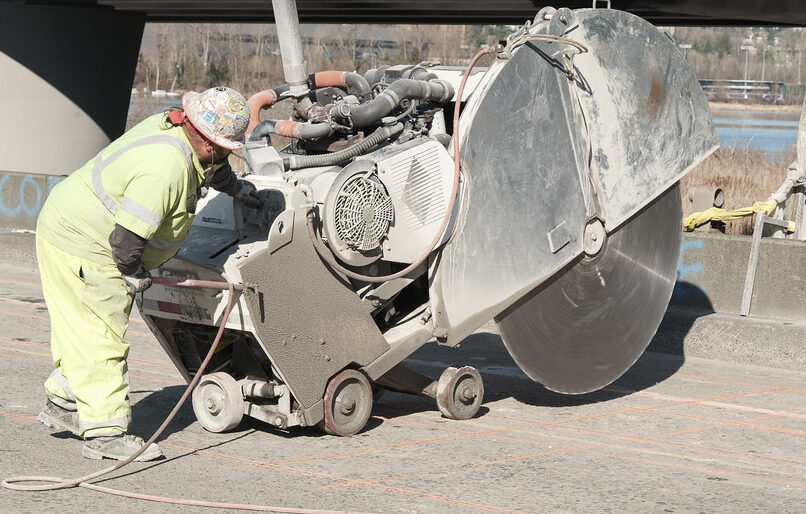Selecting the right asphalt cutting blade is essential for achieving smooth, precise cuts while ensuring durability and efficiency. Whether you’re a seasoned professional or just starting, understanding the various blade types, materials, and specifications can make all the difference. At LuxSense, we prioritize performance and safety, offering top-quality cutting solutions that enhance productivity and minimize costs.
In this guide, we will explore the importance of choosing the correct blade, the different types available, and the key factors to consider when selecting the best option for your project. Let’s dive into the world of asphalt cutting blades and discover how to optimize your cutting experience.
1. Why Choosing the Right Asphalt Cutting Blade Matters
The right blade significantly impacts cutting performance, efficiency, and overall project costs. A high-quality blade ensures:
- Precision and Clean Cuts: Reduces chipping and provides smoother edges.
- Increased Equipment Lifespan: Minimizes stress on machinery, preventing premature wear.
- Cost Savings: Reduces downtime, maintenance expenses, and material waste.
- Enhanced Safety: Prevents dangerous kickbacks and blade failures, improving operator security.
By investing in the correct blade, you can ensure a seamless cutting process while maintaining the longevity of your equipment.
2. Types of Asphalt Cutting Blades
Different asphalt cutting blades are designed for various conditions and project requirements. Understanding their characteristics will help you choose the best one.
A. Diamond Blades – The Industry Standard
- Key Features: Embedded diamond segments for exceptional cutting power.
- Best For: Heavy-duty asphalt cutting in both wet and dry conditions.
- Advantages: Long lifespan, minimal wear, and high precision.
B. Abrasive Blades – Cost-Effective for Light Use
- Key Features: Made from materials like aluminum oxide or silicon carbide.
- Best For: Softer asphalt and small-scale projects.
- Advantages: Budget-friendly option for temporary or DIY use.
C. Segmented Blades – Faster Cutting Speeds
- Key Features: Features gaps or slots between segments for cooling.
- Best For: High-speed cutting in both asphalt and concrete.
- Advantages: Reduces friction, prevents overheating, and extends blade life.
3. Key Factors to Consider When Choosing an Asphalt Cutting Blade
To ensure optimal performance, consider these crucial factors when selecting a blade:
A. Asphalt Thickness
- Thicker asphalt requires a diamond blade for durability.
- Thinner layers can be cut with abrasive or standard segmented blades.
B. Cutting Equipment Compatibility
- Match the blade diameter with your equipment’s capacity.
- Ensure the arbor size fits securely on your cutting tool.
C. Job Site Conditions
- Wet cutting blades are preferred for prolonged use to prevent overheating.
- Dry cutting blades work well for smaller, quick jobs.
D. Speed and Efficiency
- For faster cuts, use segmented blades.
- For precise control, opt for diamond blades.
By considering these factors, you can select a blade that enhances productivity while ensuring safety and longevity.
4. Understanding Blade Specifications and Sizes
Blade specifications determine their suitability for different tasks. Here’s what you need to know:
A. Blade Diameter
- Common sizes: 10 inches, 12 inches, 14 inches, and larger for industrial applications.
- Larger blades provide deeper cuts, while smaller blades are ideal for shallow cutting.
B. Arbor Size
- The central hole of the blade must match your cutting machine for stability and safety.
- Most blades come with adjustable adapters for flexibility.
C. Blade Thickness
- Thicker blades are more durable but require powerful machines.
- Thinner blades offer greater precision but wear out faster.
Choosing the correct specifications ensures smoother operations and prevents costly errors.
5. Tips for Maintaining and Extending Blade Life
Proper maintenance prolongs the lifespan of your asphalt cutting blade and improves cutting efficiency. Follow these essential tips:
A. Keep the Blade Clean
- Remove debris and asphalt residue after each use.
- Use compressed air or a soft wire brush to prevent buildup.
B. Monitor Blade Sharpness
- A dull blade increases strain on machinery and reduces efficiency.
- Use a dressing stone or professional sharpening service when needed.
C. Store Blades Properly
- Keep in a dry, cool place to prevent corrosion.
- Avoid stacking blades directly on top of each other to prevent damage.
D. Follow Manufacturer Guidelines
- Use the blade within recommended RPM limits to avoid overheating.
- Check for cracks or damage before use to ensure safety.
By implementing these maintenance strategies, you can extend blade life and reduce replacement costs over time.
6. Visual Enhancements for Your Website
To make this guide more engaging, consider adding the following images:
-
Different Types of Blades in Action
- Alt Text: “Comparison of diamond, abrasive, and segmented asphalt cutting blades.”
-
Proper Blade Storage Setup
- Alt Text: “Well-organized blade storage to prevent damage and corrosion.”
-
Cutting Equipment in Use
- Alt Text: “High-performance asphalt cutting machine with diamond blade in operation.”
Adding these visuals enhances user engagement while improving SEO performance.
Conclusion: Achieve Precision Cutting with LuxSense
Choosing the right asphalt cutting blade is essential for efficiency, precision, and cost-effectiveness. By understanding blade types, specifications, and maintenance practices, you can maximize performance and extend the lifespan of your equipment.
At LuxSense, we provide high-quality asphalt cutting solutions tailored to your needs. Explore our premium cutting blades and ensure your next project is completed with accuracy and efficiency.
Contact us today to find the perfect blade for your asphalt cutting needs!


